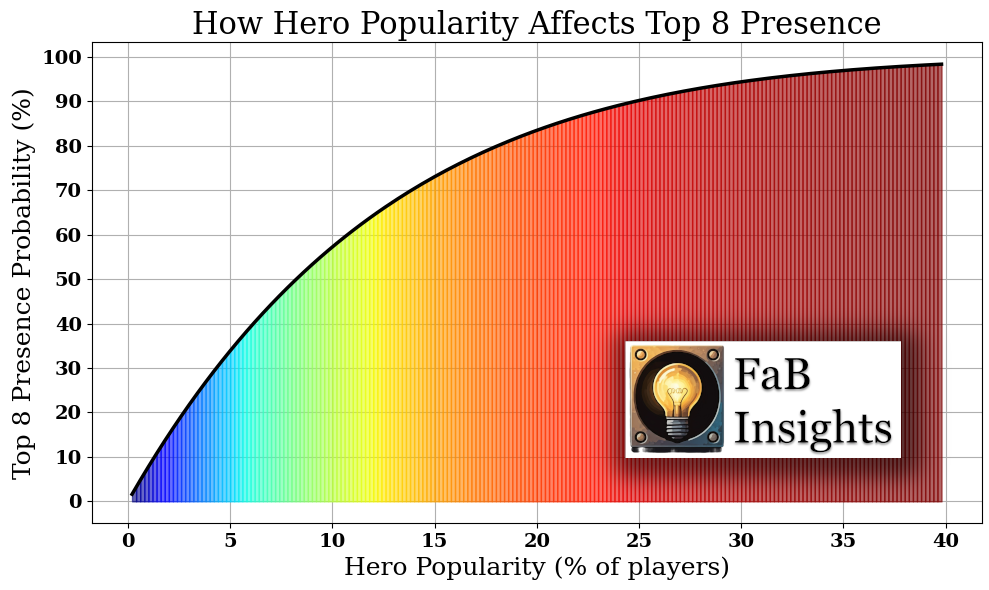When we look at tournament results, the first thing many players notice is which heroes made Top 8. It’s a habit, and a useful one, to some extent. But there’s a common mistake that keeps coming back in every meta: confusing top 8 presence as a pure measure of actual power. While in other places I have already discussed the role of luck – almost any hero can make it provided that the stars align – here I want to discuss the role of hero popularity, i.e., how many people play a certain hero at a tournament.
Yes, strong decks attract players. But popularity plays a much bigger role in top 8 appearances than most people think. And without accounting for that, we risk overestimating how strong a hero really is.
The Numbers Behind Representation
Let’s consider what happens when a hero becomes popular. Maybe it’s perceived as a meta call, maybe it just won a big event, maybe a popular player picked it up. As more players bring it to tournaments, its chances of showing up in top 8 grow, not only because it wins more than it should, but also because more people are trying with it.
Statistically, even if a hero has only average performance, once its play rate crosses 20–30%, it becomes very likely to occupy at least one top 8 slot. For example:
- A hero played by 10% of the field has already ~56% chance of getting at least one spot in top 8.
- At 20%, that chance jumps to ~83%.
- And at 30%, it reaches ~94%, even if the deck performs exactly at average win rate.
So when a hero takes multiple top 8 spots but was already a quarter or a third of the meta, it’s often not a sign of dominance, it’s just the math working as expected.
This chart shows how a hero’s popularity affects their chances of appearing in the Top 8, assuming all heroes are equally strong:

Popularity and Power Go Hand in Hand – But Not Equally
There’s no doubt that heroes become popular because they’re seen as strong. But once that perception takes hold, it creates momentum. Players go for the “safe” choice. Teams test around the same list. Content creators reinforce the trend. As a result, the hero shows up more, and that popularity alone increases its top cut appearances, which then feeds the perception loop.
The important point is this: popularity amplifies results. A good hero played by many will look great. A great hero played by few may look forgettable.
Why This Matters
Understanding the relationship between popularity and top 8 results helps you read tournament data more clearly. A stacked top 8 doesn’t always mean a broken hero, and a single top 8 outlier might point to something underplayed.
This is especially important in the early stages of a meta, where perception is still forming. Relying only on top cut snapshots without considering play rate gives an incomplete – and often misleading – picture.
Conclusion: Results Need Context
Top 8 appearances make for flashy headlines, but they don’t tell the full story. Of course several factors that go beyond the intrinsic hero power – like the skill of the player – come into play. But before jumping to conclusions about a hero’s power level, always also ask: how many players were on it?



